When we invited artist and ceramicist Laura Winstone to design our English Delft wrappers, we knew her love of nature and hand-crafted detail would bring something special. Inspired by Norfolk’s wildlife and the tradition of Delftware, Laura reimagined sea creatures tied to ocean rewilding in her signature blue-and-white style. Here, she shares the story behind the collaboration and what she hopes each wrapper brings to the everyday.
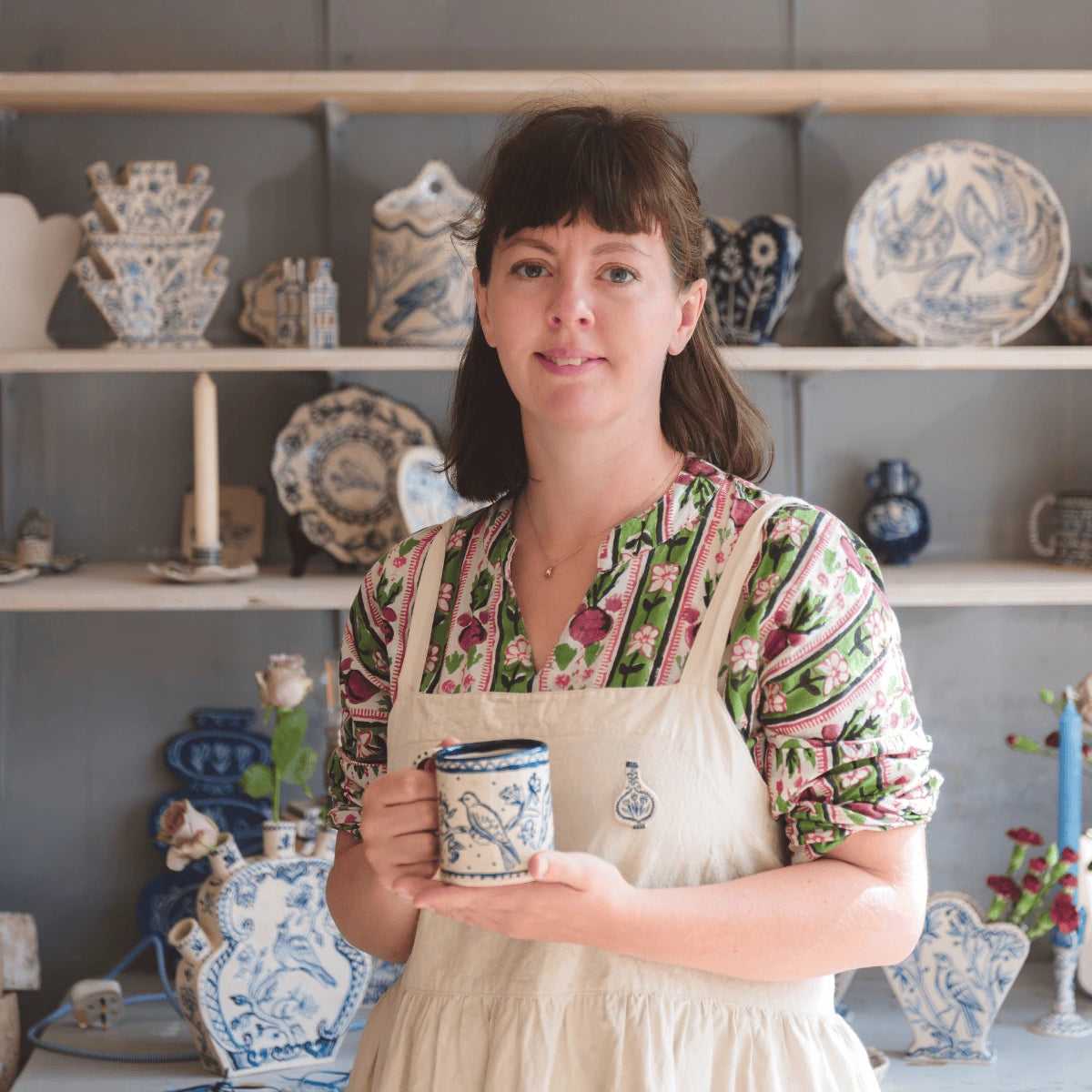
can you tell us about the earliest moment that pulled you toward clay and the tactile world of ceramics?
I’ve always been an artist, working primarily in collage. I’m been drawn to making things by hand and exploring materials. A few years ago, I began taking evening classes in ceramics and found myself completely taken by it. The transition from collage to clay felt quite natural; both involve a strong sense of composition, layering, and working with your hands in a very physical way.
Although I’d done a bit of clay work back in school, it wasn’t until I was studying for a Master’s in Children’s Illustration that things really started to shift. That’s when ceramics began to intertwine with my illustration practice and the two have grown together ever since.
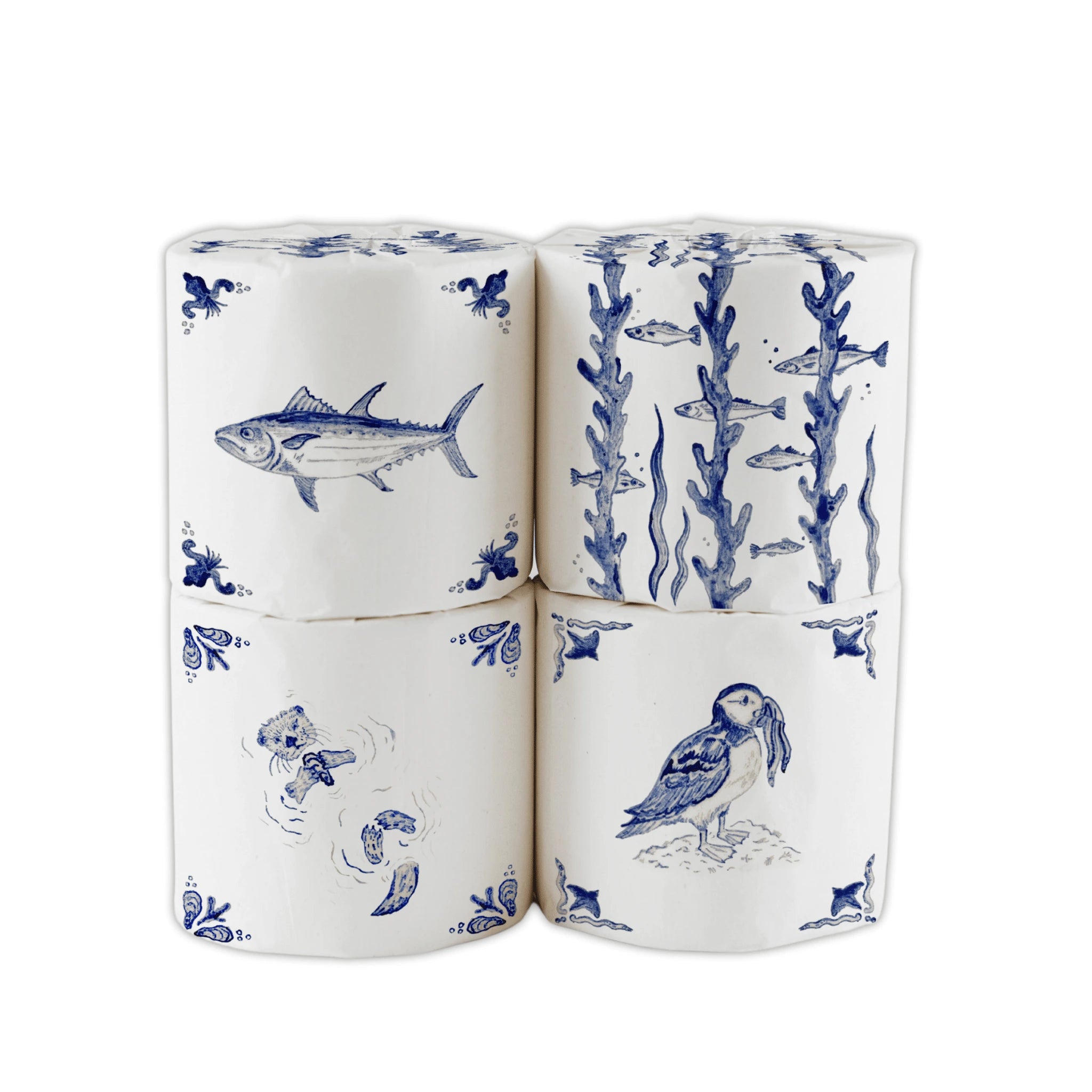
designing for toilet paper is an unusual commission- how did the conversation with Bumboo begin, and what was your first reaction to the idea of translating delicate tilework onto something utterly ephemeral?
It was such an exciting commission, it’s not every day you get an email from a toilet paper company! I was thrilled to receive the details. At the time, I was eight months pregnant, so I was keen to get the project underway.
The collaboration came about because I’d already made a set of wildlife tiles to go around a wood burner on my Dutch boat, inspired by the creatures found on the Norfolk Broads. Bumboo came across them and felt it was a great fit for what they had in mind.
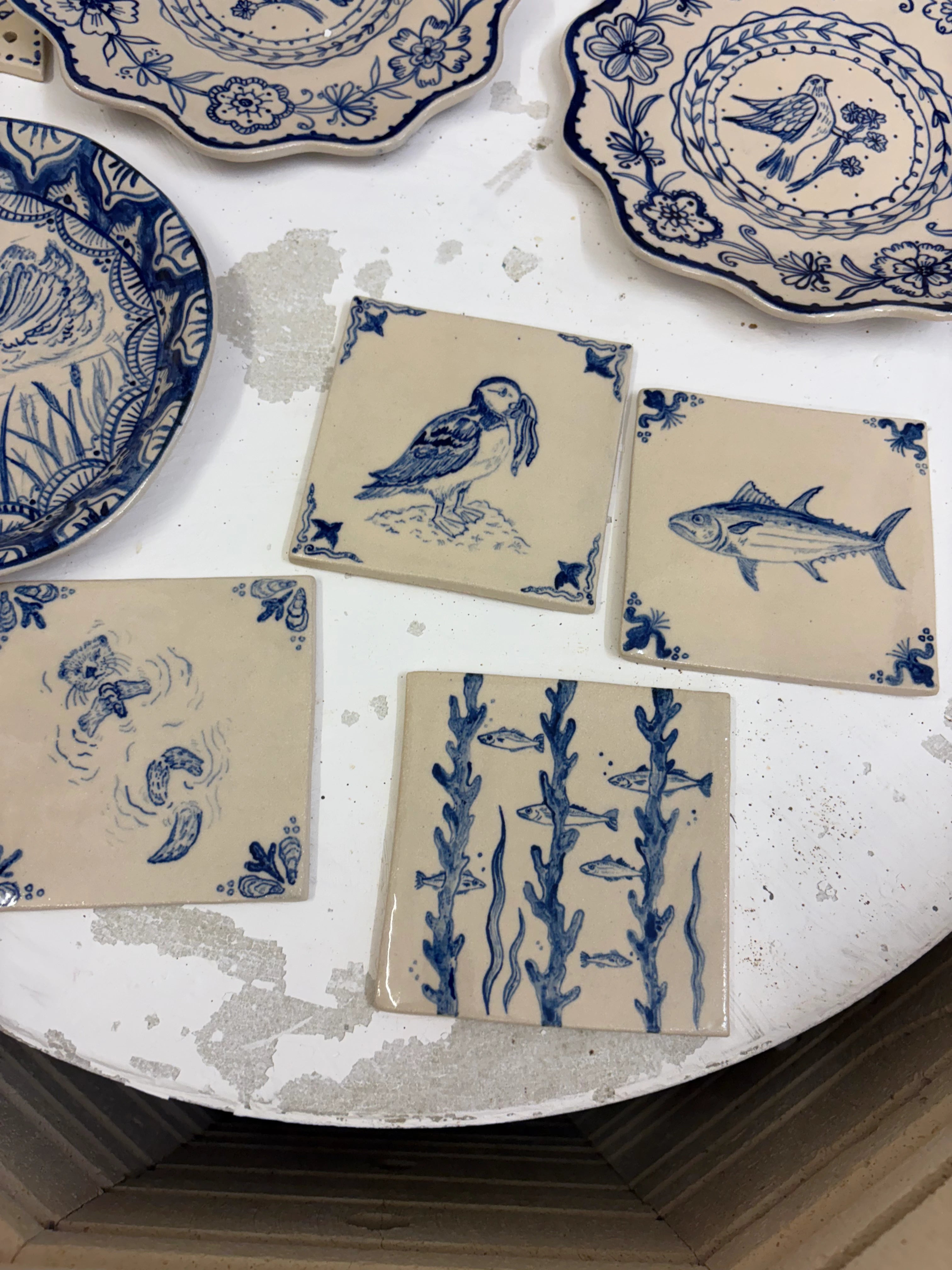
when did the phrase “English Delft” first resonate with you? what does it mean, to your mind, to weave together ceramic traditions and ocean imagery?
Delftware has always been a constant source of inspiration. My nanny had a small collection on her shelves, and I think that’s one of my earliest memories of the classic blue and white ceramics. I’ve also been lucky enough to visit the Netherlands a few times and explore the Delft Museum, it’s a beautiful and inspiring place.
Living on the Norfolk Broads, I spend a lot of time walking by the river or along the coast, where there’s an abundance of wildlife. That naturally finds its way into my work.
There’s also something lovely about the connection between Norfolk and the Netherlands, the landscapes are strikingly similar, all big skies and flat open spaces, and there are strong historic ties between the two. So it felt especially fitting to bring a Delft-inspired aesthetic into my work.
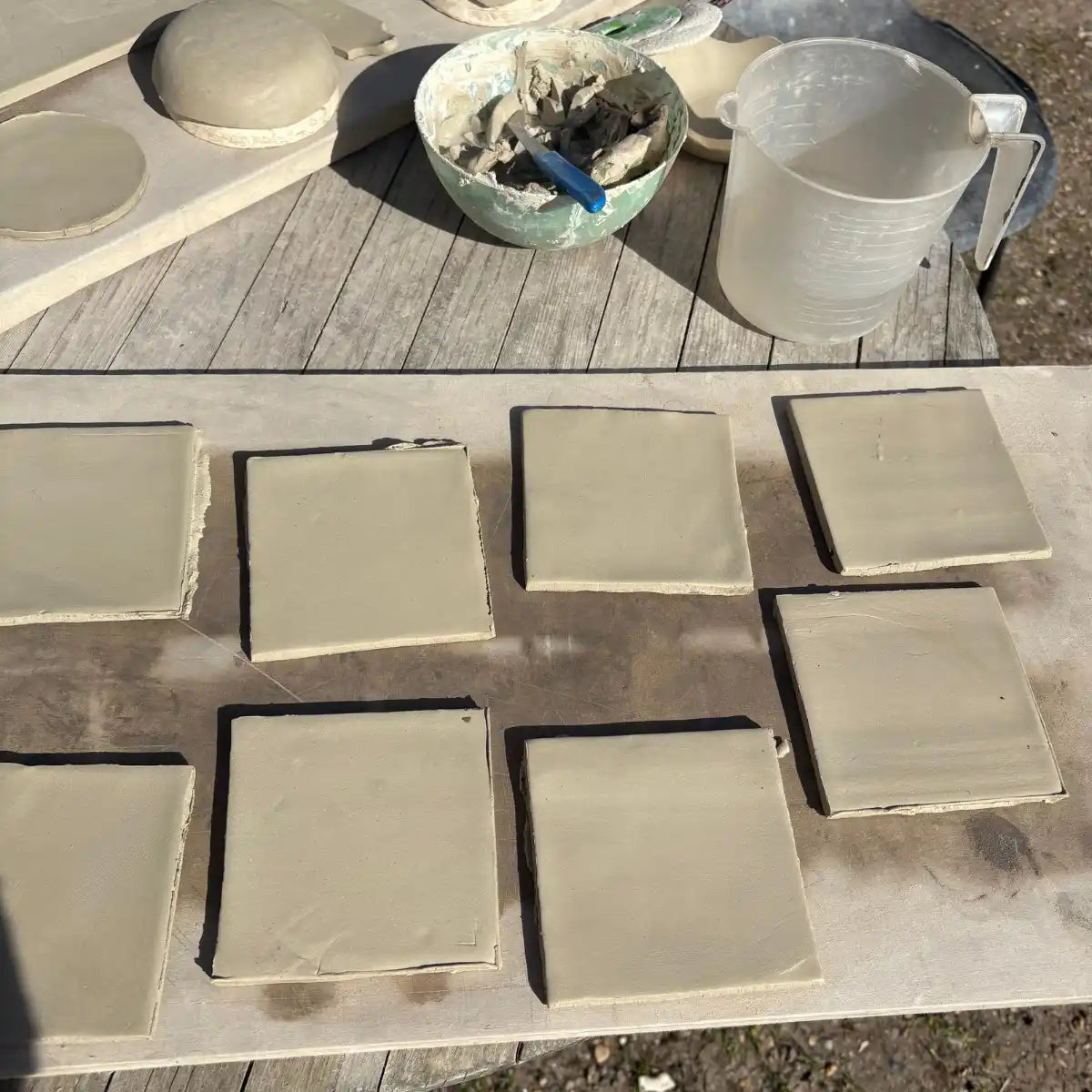
describe a typical morning in your studio during the English Delft project.
My day starts with a short walk from home to my lovely shared space at Studio Do. A small ceramics studio in Norwich. It’s a calm and focused environment, and I usually settle in with a cup of tea before sketching or prepping clay. I then spend some time researching imagery and illustrating some designs in the afternoon. I like to paint my ceramics at home in the evenings when it’s quiet and calm.
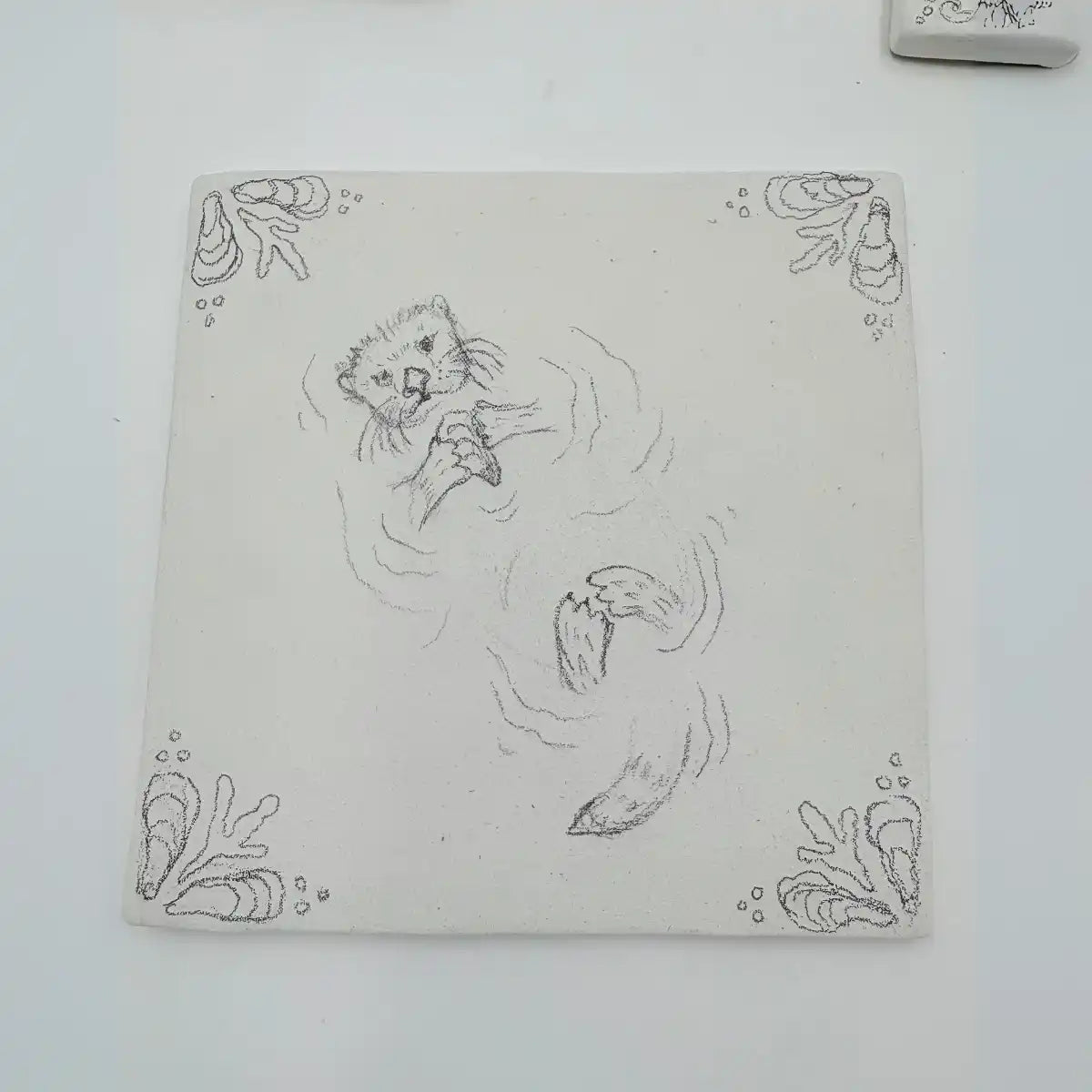
one by one, your sea-creature motifs come to life, which creature came easiest, and which surprised you by revealing its personality?
All the creatures were a joy to bring to life, but the tuna came together the easiest in terms of layout and design. I particularly loved working on the otter. It’s a creature I hope to see one day on the Broads. I’ve heard them once, but never caught a glimpse, so there was a sense of longing in that piece.
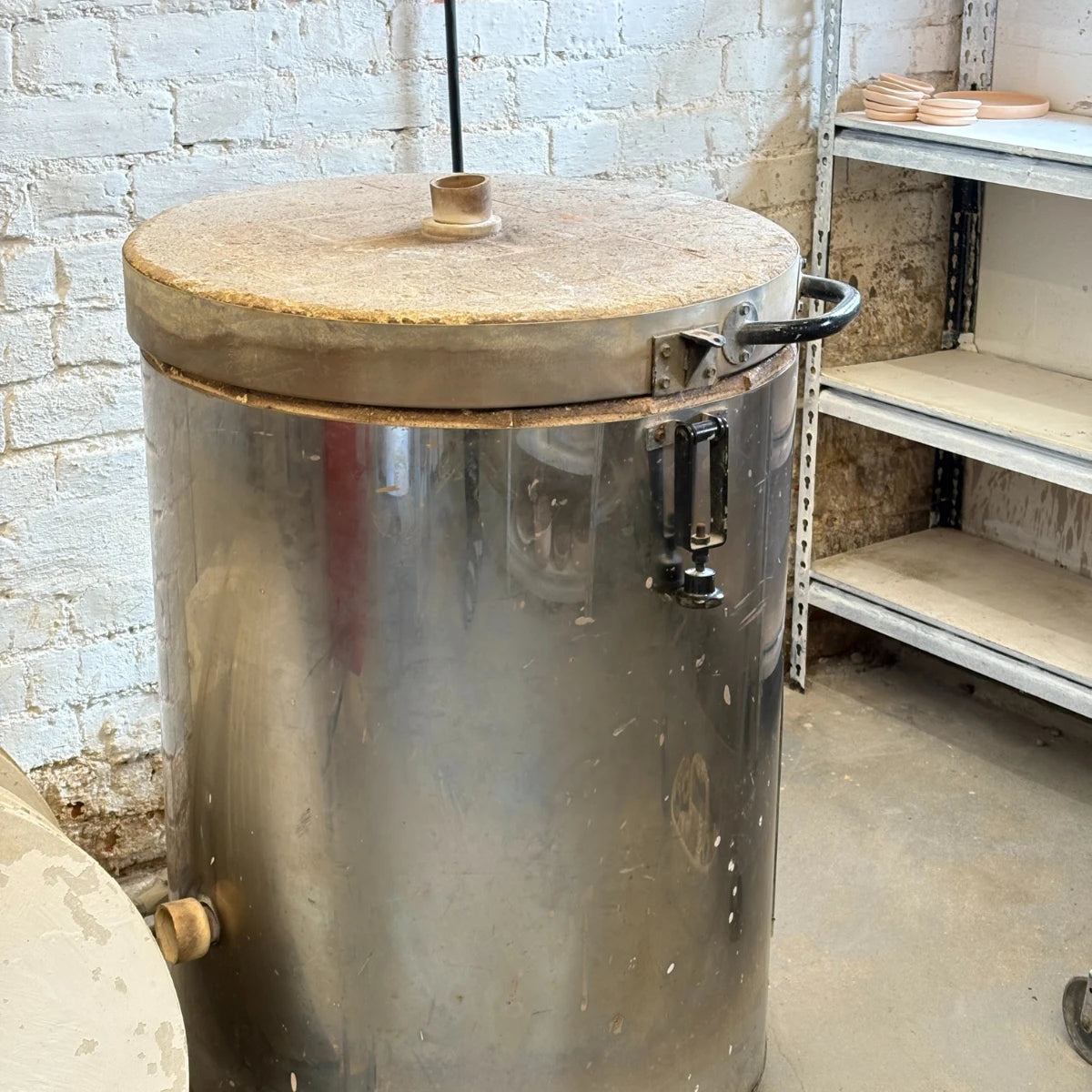
every creative project has its forks in the road. what was your creative process for producing the result? was there a moment when a design didn’t feel true, and what did you do next?
I was lucky to have a clear brief, which really helped. The main challenge was the tight deadline. Ceramics demand time, from wedging and rolling the clay to cutting, drying, then the first firing, all before any illustration even begins.
After painting, the glazing and final firing are always a bit nerve-wracking, you never quite know what will come out of the kiln. I really enjoyed the research and design phase, as that’s when the whole thing starts to come alive.
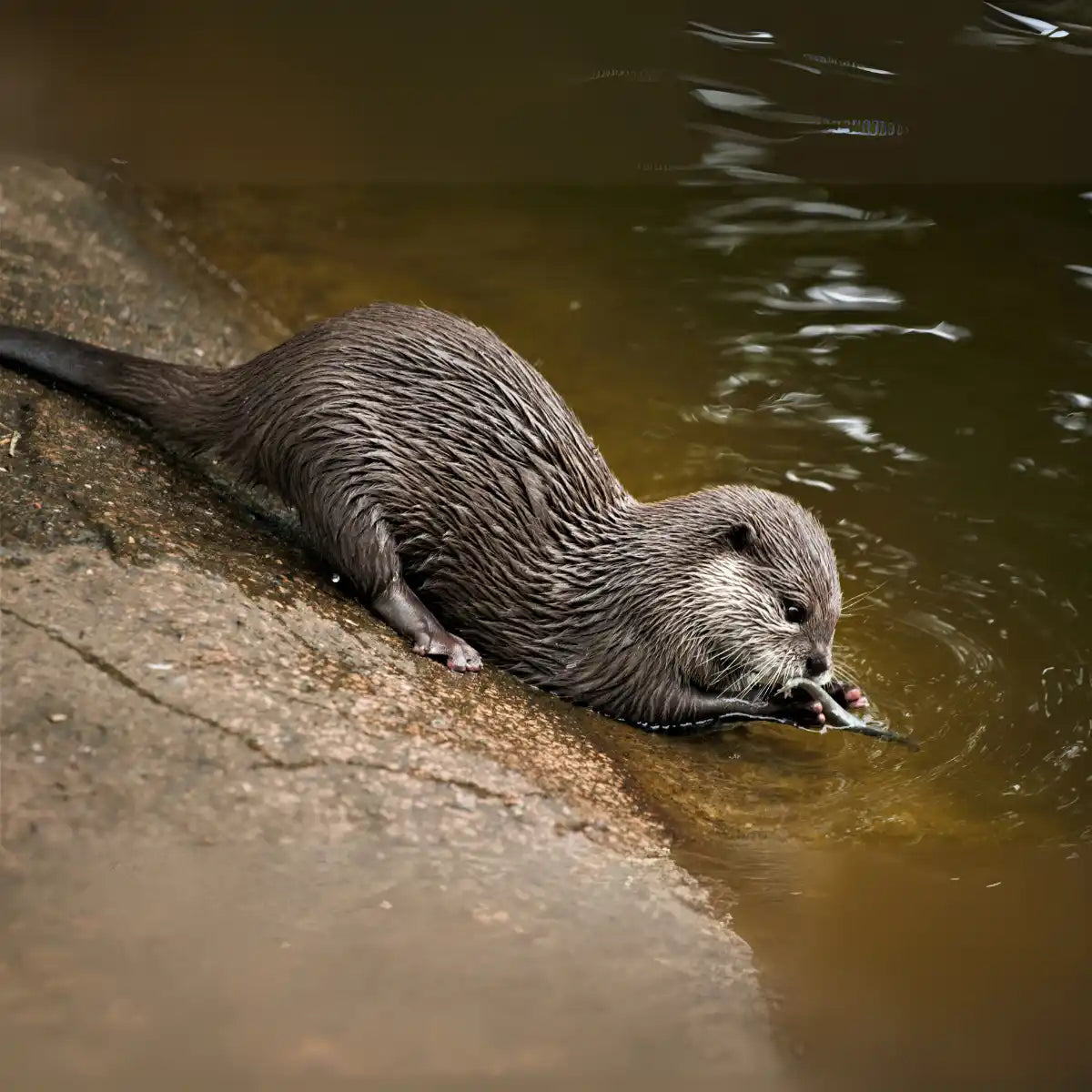
the creatures featured on the tiles are tied to ocean rewilding. do you have a personal memory of being by the sea that shaped how you approached their depiction?
I feel very lucky to live in Norfolk with its stunning coastline. I’ve always loved swimming and being by the sea. Living here, I often spot seals, fish, and a wide variety of birds, they naturally become part of my visual language. This project felt like an extension of what I already love to create.
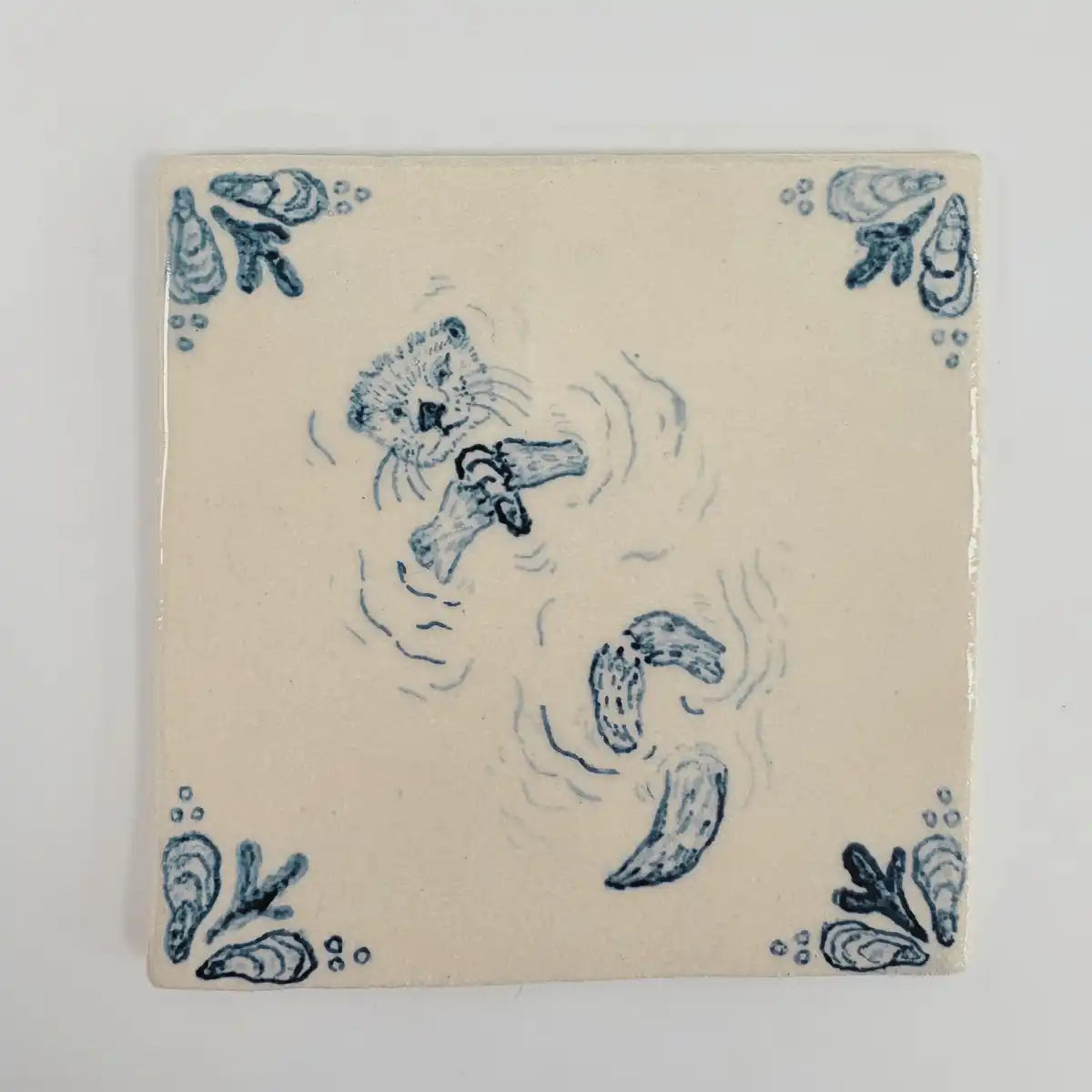
if each roll were a standalone tile in someone’s home arranged as a wall of them. what would you hope the full pattern depicts about renewal, play, or protection?
I love that ceramics and illustration can be used to educate and spark curiosity in this case, about rewilding and how vital our oceans are. I’d hope the full pattern brings a sense of connection to the sea, a playful elegance, and perhaps a quiet reminder of our shared responsibility to protect it.
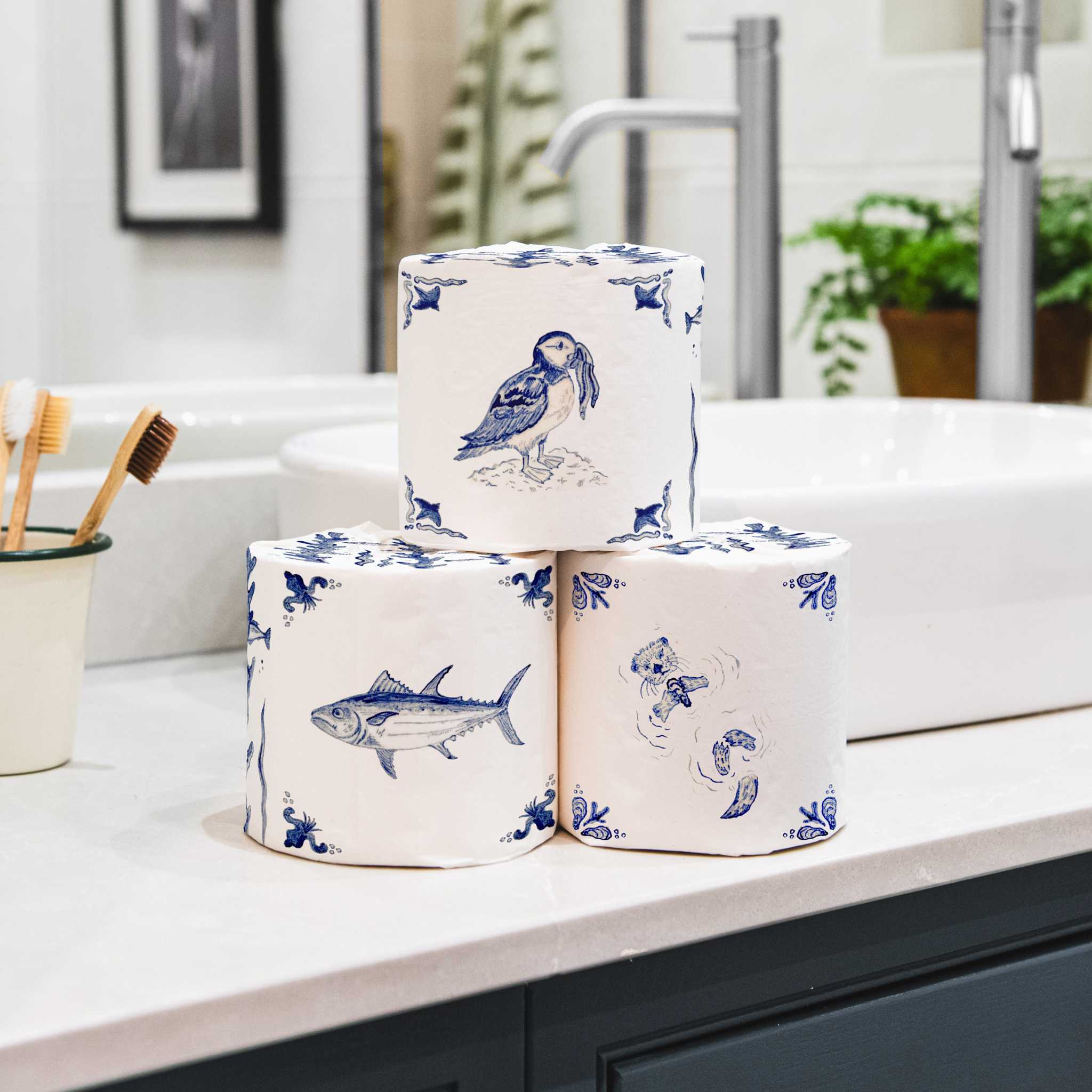
finally, when someone unwraps an English Delft Edition wrapper at home, what do you want them to feel, imagine, or be reminded of?
Blue and white ceramics are innately classic, they carry so much cultural and historical weight. I hope the wrapper brings a sense of charm and playfulness, while also adding a stylish touch to a bathroom or utility space. Something unexpected and quietly joyful with a deeper meaning.
It’s not every day that sea creatures, centuries-old ceramics, and toilet paper come together- but somehow, in Laura’s hands, it just works. Her English Delft designs invite a little wonder into the everyday, offering a quiet reminder that beauty, playfulness, and purpose can live in the most unexpected places.


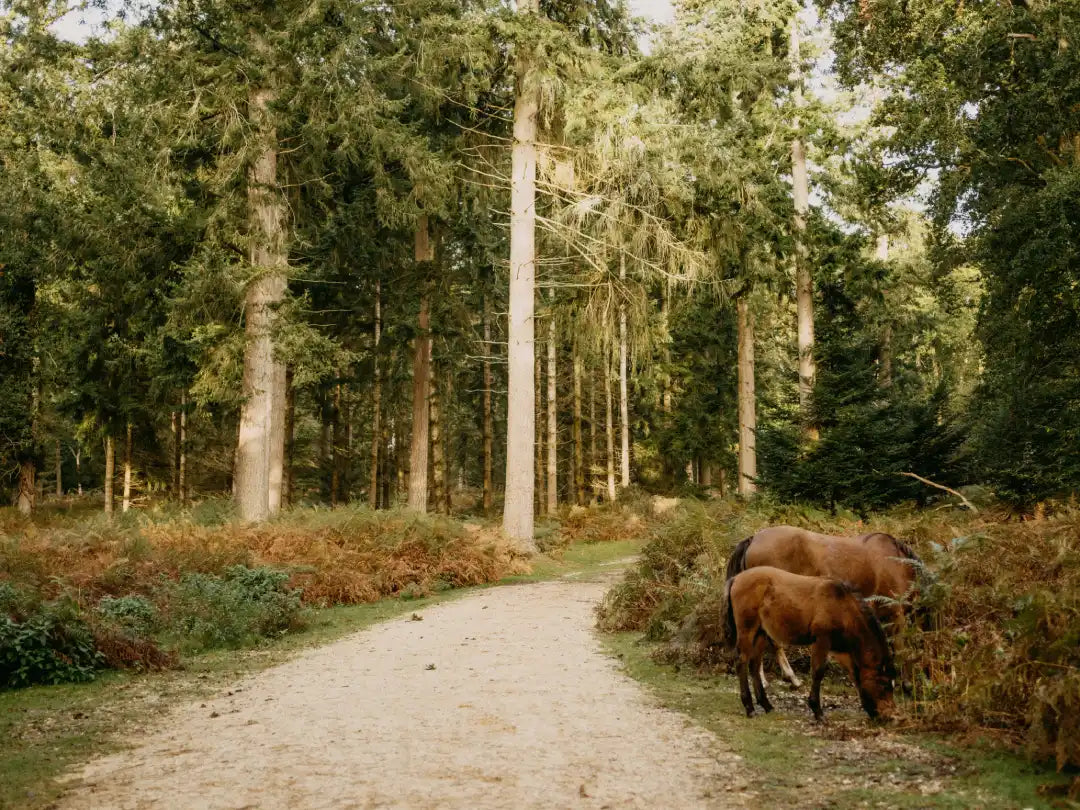
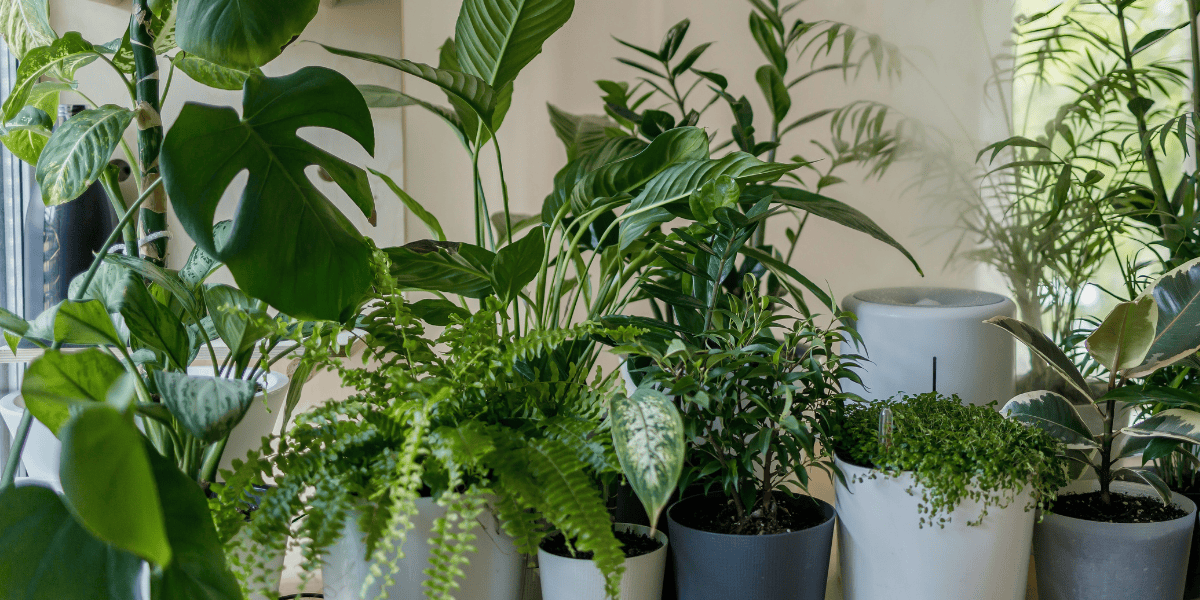
1 comment
Such a beautiful collaboration highlighting an important cause.